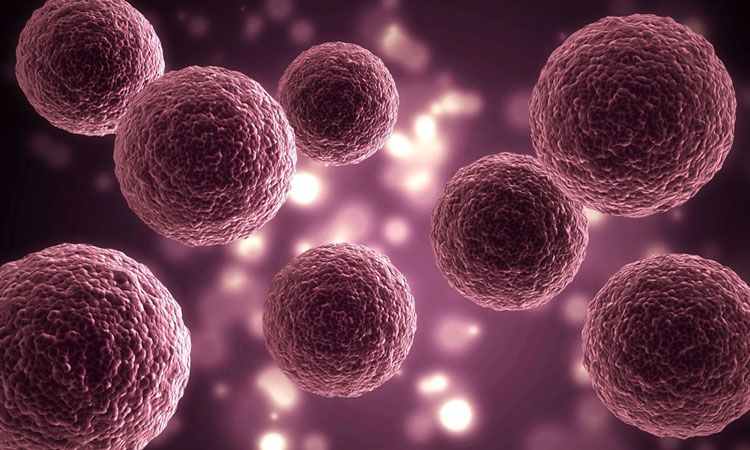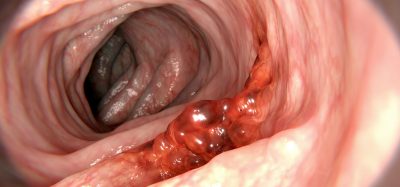Advanced 3D cell-based technologies
Posted: 19 September 2023 | Sahithi Kuravi (Mestag Therapeutics Limited) | No comments yet
Recent regulatory changes in the US and Europe are driving the adoption of advanced 3D cell-based technologies, such as organoids and organ-on-chips, in drug development, replacing traditional animal testing and offering safer, cost-effective alternatives.

The US FDA Modernisation Act 2.0., puts an end to the previous mandate that all drugs need to be tested on animals prior to human clinical trials. Prior to this European Union Parliament, in 2021, voted for animal testing phase out. This major shift to the orthodox tradition of using animal experiments in drug testing dates back the Aristotle’s time and cemented 80 years ago with initial federal mandate of drug safety regulation of 1938. The new change signals a major shift to drift towards the high-tech cellular alternatives urging drug makers to rely more on alternative methods such as organ-on-chips, organoids and complimentary computational models. The urgent challenge lies in finding better models that that closely mimic human physiology and provides promising potential to yield cheaper, safer and non-toxic drugs, while justifying 3R’s of animal models.
Viable in vitro alternatives to animal Models:
The European Medicines Agency has launched the new approach methodologies in 2021 promoting the use of animal experiment alternatives in drug discovery and development. Some of the complex 3D models such as organoids and organ-on-chips have brought in realistic make-over to the drug screening and paved way into implementing high content screening, laboratory automation and miniaturisation in primary drug screening process.
Organ-on-chip model, an advanced micro physiological system:
Microfluidic organ-on-chips are dynamic 3D micro physiological systems that mimic human tissue microenvironment embedded in silicone-based polymers with integrated dynamic fluid flow. This model recapitulates tissue-tissue interface, vascular perfusion with circulating immune cells, connective tissue cells and organ-relevant mechanical flow dynamics. The chips can be modelled with primary cells, IPS derived stem cells or patient derived cells and potentiates to unlock molecular mechanisms that drive the disease pathophysiology, holding a greater promise.
The first successful chip adaptation to a lung model was first described in 2010 by Donald Ingber, a bioengineer at Wyss institute.1,2 This miniature organ chip devices emulate 3D structures with tissue-specific cell types and recreating organ functional units in an in vitro setting to test the effects of drugs and detailed reviewed.3-5 Boston biotech, Emulate, established liver-on-chip device is designed to accurately measure liver toxicity and predict drug induced liver injury (DILI).5,6 They have tested 22 hepatotoxic drugs and 5 non-hepatotoxic drugs on liver chip with known toxicities and shown that the chip correctly identifies 87 percent of the drugs that cause liver injury in patients.5
In stepping towards integration of these models into drug discovery process, legislation to incentivise the use of these models for predicting drug toxicities is needed. The International Consortium for Innovation and Quality in Pharmaceutical Development has published guidelines to qualify as a valid model for specific organ-chip applications. These guidelines drive the legitimacy of the models towards regulatory approval. To this end, the FDA’s newly created iSTAND initiative drives the path toward regulatory approval for devices like organ-on-chips.7 Clearly, organ-on-chip models to be more acceptable, this innovative technology needs to be cheaper and high throughput, pushing the progressive regulations that prioritise patient safety over status quo.
In spite of the colourful picture, lot more work needs to go into the area and organ-on-chips do come with their limitations. They are not for low molecular weight drugs as the rubber polymer channels of the chip tends to absorb and the compound is not actually exposed to the cells. Additionally, the experimental testing and data acquisition from organ-on-chips requires special instrumentation and may also require battery of different and complementary tests. On the other hand, the reproducibility of the data in these 3D models and are less feasible in acquiring high throughput results. In addition, these models at the current state are better for short term tests, over a week or two and cannot be used for acquiring data from long term drug exposures. In spite of current success and possibility to be a successful cell technology model, the integration of organ-on-chips into drug development process needs more optimisation to be validated for FDA approval.
Miniature organs as test beds for new drugs
Organoids are miniature human organs with clusters of cells derived from stem cells and mimic specific tissues. These mini organ-like structures derived from patients demonstrates high level of clinical mimicry to patient responses and the multiomic analysis revealed the match comparative modelling to patient tissues.
First developed in 2008, by Toshiro Sato, Hubrecht Institute at Utrecht University, these structures range from mini-brains to mini-guts with varied applicability from drug discovery to personalised medicine.8 Organoids have shown remarkable promise in predicting patient responses to drugs with liver and cardiac toxicities, where animal models failed in this area to draw safety issues. Pharmaceutical companies adapted the usage of organoids derived from specific patient derived tumours in cancer drug screening process for testing drug toxicities and efficacy.
The organoid technology recreates different disease scenarios in addition to the healthy models with age specific phenotypes and enables recreating drug specific Pharmacokinetics that is more relevant to human in vivo system. Patient derived organoids retain the genetic and epigenetic make up of patient’s tissue and can be stably expanded ex vivo, an invaluable tool to test new drug efficacy and toxicities. These models also enable understanding disease pathophysiology from Stromal perspective where immune cells and mesenchymal environment is a major driver of inflammation in diseases like Inflammatory disease and cancers. Organoid technology usage has grown exponentially in extended utility of patient derived organoid screening platform, particularly in immune-oncology, inflammatory diseases, toxicology and infectious diseases.
Recent Nature publication (2022) demonstrates the speed and accuracy at which patient derived organoids contributed to a large scale functional screen of bispecific antibodies on a heterogenous colorectal cancer that reached clinical trials within 5 years from the initial development.9 FDA’s positive response towards primate chips to test drugs and in gamma radiation testing that cannot be done in animal studies or human clinical trials, makes this model more attractive alternative in qualifying the 3R’s of animal experiments.
Organoid technology, compared to organ- on chips, can be carried out in a high throughput format in drug screening with its high content information. However, building that scalable process with minimal batch variability is a challenge. Additionally, successful integration of vasculature is essential to have fully functional organoid tissue to cater for long term chronic pharmacological readouts. These alternative models for drug testing are promising but are relatively at their infancy with need for rigorous optimisation and standardisation of protocols to reach FDA standards.
In silico models as alternative experimental models
Artificial intelligence and machine learning based computational approaches stand at the forefront of the que in preclinical drug testing providing accuracy and efficacy. Human computational models could provide faster, cheaper and additionally effective alternatives to experimental animal testing. In 2017, a successful in silico drug simulations were developed that represent human ventricular action potential models for routine ion channel screening, to predict pre-clinical risk of drug induced cardiac adverse effects.10 However, these in silico results are strictly regulated by the quality and reliability of the input data and are cheap compliment to the experimental modelling in predicting drug efficacies and toxicities. Understanding the predictive power of these computational models and integration of computational models at early drug discovery process is cost effective and complimentary alternative in partial reduction of animal experiments.
Closing remarks
Solution based science, but not problem-based science becomes the basis of success of science. We are in need for scientifically and economically enterprising preclinical models that quantitatively predict the safety and efficacy of the drugs. Convincing regulatory authorities through trusted models and scientific communities with trusted collaborations working together, enables development of more reliable and cost-effective cellular models that enable reducing the animal usage in pre-clinical trials of drug development.
The introduction of human physiologically relevant organoid and organ-on chip have the potential to achieve the ultimate goal of cheaper, faster and safer drugs that unblock the model of medicine and impact patients. Following the new FDA and EMA mandates to minimise animal testing, there is explosion of alternative models and protocols to compensate the existing protocols. However, extensive validations are pivotal in standardising the new cellular technologies. It is also important to overcome misconceptions and reluctance of the pharmaceutical companies and industry giants invested in animal modelling and embrace new cellular technologies in replacing insane animal experimentation. The new law doesn’t necessarily alter the drug regulatory process but enhance the scientific challenge and responsibility for pharmaceutical companies and FDA to thoroughly vet any new methods that replace animal experiments to ensure the clinical investigations of drugs are safer usage in humans.
The challenge is achievable when the rate of innovation is balanced by changing mindsets that in turn drive the drug development process that are more sane to the environment and patient safety.
References
- Huh D, Matthews BD, Mammoto A, Montoya-Zavala M, Hsin HY, Ingber DE. Reconstituting Organ-Level Lung Functions on a Chip. Science. 2010;328(5986):1662-8.
- Huh D, Hamilton GA, Ingber DE. From 3D cell culture to organs-on-chips. Trends in Cell Biology. 2011;21(12):745-54.
- Huh D, Torisawa Y-s, Hamilton GA, Kim HJ, Ingber DE. Microengineered physiological biomimicry: Organs-on-Chips. Lab on a Chip. 2012;12(12):2156-.
- Ingber DE. Human organs-on-chips for disease modelling, drug development and personalized medicine. Nature Reviews Genetics. 2022;23(8):467-91.
- Jang K-J, Otieno MA, Ronxhi J, Lim H-K, Ewart L, Kodella KR, et al. Reproducing human and cross-species drug toxicities using a Liver-Chip. Science Translational Medicine. 2019;11(517).
- Ewart L, Apostolou A, Briggs SA, Carman CV, Chaff JT, Heng AR, et al. Performance assessment and economic analysis of a human Liver-Chip for predictive toxicology. Communications Medicine. 2022;2(1):154-.
- FDA. Innovative Science and Technology Approaches for New Drugs (ISTAND) Pilot Program Submission Process. https://www.fda.gov/drugs/innovative-science-and-technology-approaches-new-drugs-istand-pilot-program/innovative-science-and-technology-approaches-new-drugs-istand-pilot-program-submission-process2020.
- Sato T, Vries RG, Snippert HJ, van de Wetering M, Barker N, Stange DE, et al. Single Lgr5 stem cells build crypt-villus structures in vitro without a mesenchymal niche. Nature. 2009;459(7244):262-5.
- Herpers B, Eppink B, James MI, Cortina C, Cañellas-Socias A, Boj SF, et al. Functional patient-derived organoid screenings identify MCLA-158 as a therapeutic EGFR × LGR5 bispecific antibody with efficacy in epithelial tumors. Nature Cancer. 2022;3(4):418-36.
- Passini E, Britton OJ, Lu HR, Rohrbacher J, Hermans AN, Gallacher DJ, et al. Human In Silico Drug Trials Demonstrate Higher Accuracy than Animal Models in Predicting Clinical Pro-Arrhythmic Cardiotoxicity. Frontiers in Physiology. 2017;8.
Related topics
Organ-on-a-Chip, Organoids
Related organisations
Emulate Inc, European Medicines Agency, Mestag Therapeutics Limited
Related people
Sahithi Kuravi (Mestag Therapeutics Limited)



 Sahithi Kuravi
Sahithi Kuravi 



